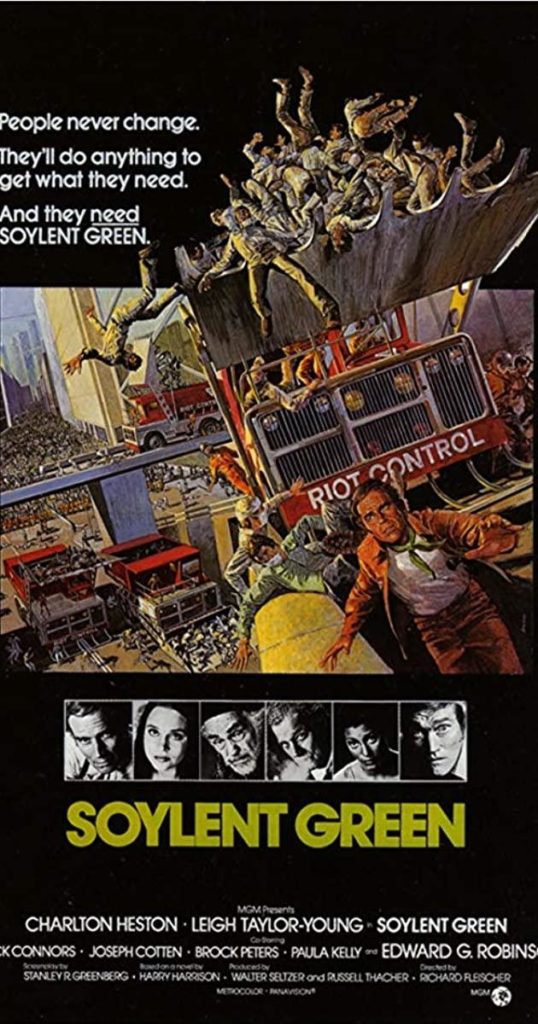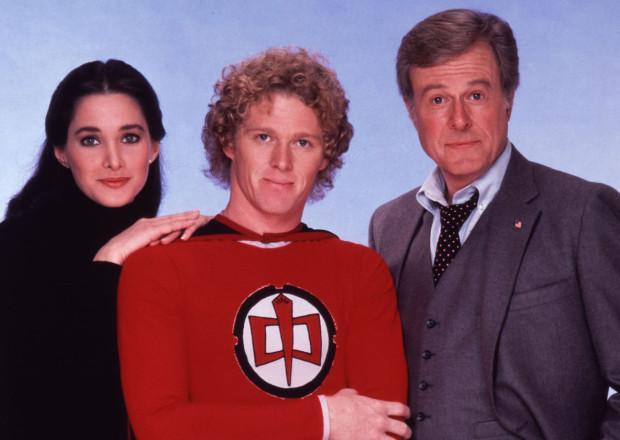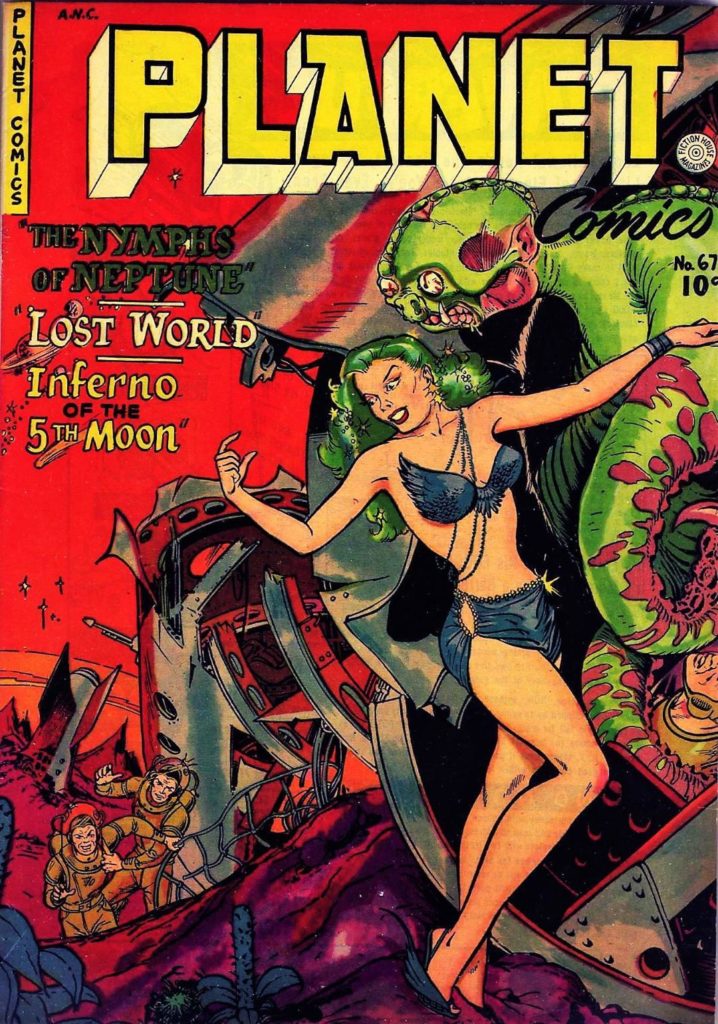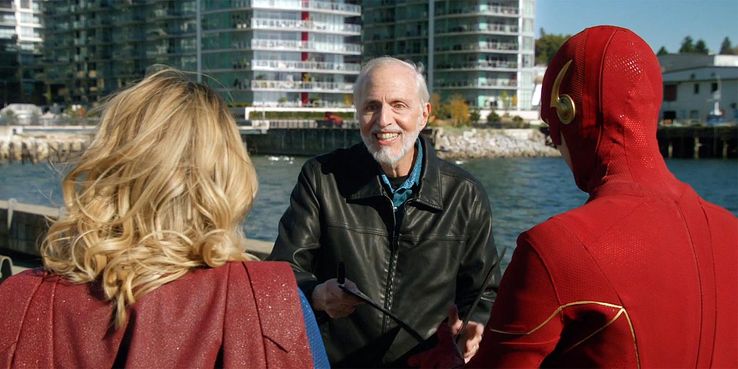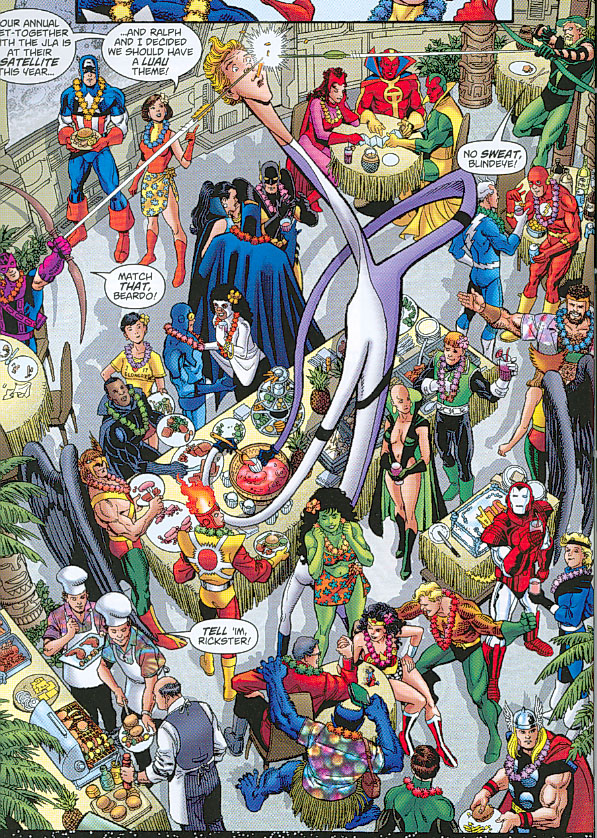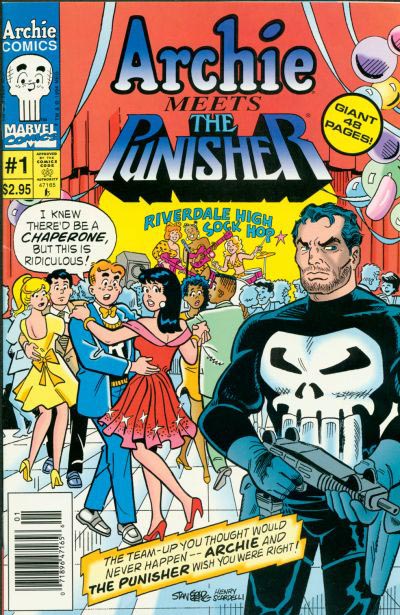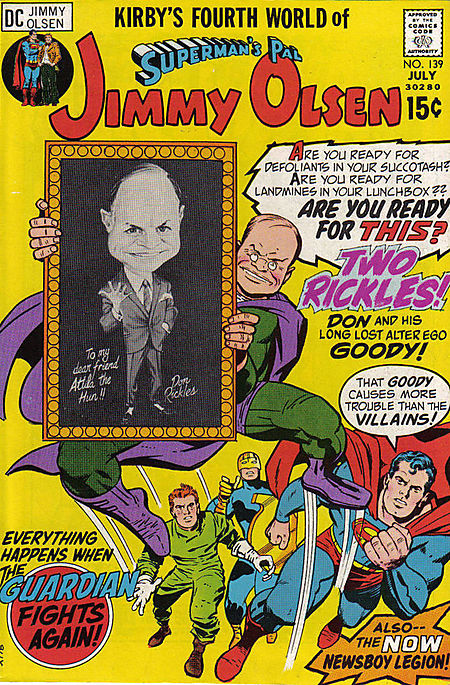(1) A BRADBURY BUSINESS CARD. Featuring Ray’s work as a “creative consultant” on a pair of major developments.

(2) TREEHOUSE PRESENTS. The 35th installment of The Simpsons “Treehouse of Horror” series, this episode will be released on November 3, 2024.
According to a Variety article published in July, there will also be a “Treehouse Presents” parody of Bradbury this season:
…“Treehouse of Horror” won’t be the only spooky “Simpsons” event this season, as the producers announced that a “second scary trilogy” will focus on a trio of stories inspired by Ray Bradbury. Dubbed “Simpsons Wicked This Way Comes,” Selman said the stories will be “dark and funny and in the Halloween spirit.”
Conrad noted it is under the umbrella of “Treehouse Presents.” Inspired by Selman reading Bradbury, she and other writers found several more episodes to parody. Among guest stars on that episode: Andy Serkis.
Groening noted that Bradbury once slammed the show in the press after its launch. He eventually met Bradbury, who said he had a bone to pick with the show because it borrowed from a “Twilight Zone” episode he had written. “He was mad,” Groening said of the late writer. “I wonder what Ray Bradbury would think about this episode. Oh wait!”
Quipped Selman: “Hopefully his estate is equally loving.”
As currently scheduled, the 35th “Treehouse” will run right after Halloween, while the Ray Bradbury episode will air in November….
(3) RAY’S DC COMICS ALTER EGO. Brian Cronin recalls “When Supergirl Had to Solve Ray Bradbury’s Abduction!” at CBR.com.
Today, based on a suggestion from reader Fred K., I take a look at the time that Supergirl had to solve Ray Bradbury’s abduction!
Julius Schwartz, the then-editor of the Superman titles, was Ray Bradbury’s first science fiction agent and Schwartz was acquaintances with a lot of those writers, which explains why Isaac Asimov also has appeared in this feature during Schwartz’s time on the Superman titles.
The story, written by Jack C. Harris and drawn by Don Heck and Joe Giella, opens with Supergirl awaiting a flight carrying famed author Brad Reynolds (Ray Bradbury) into town…
However, shockingly enough, Reynolds/Bradbury VANISHES!…

(4) A FOCUSED GROUP. “Bradbury, Wrights, Claude: Obstacles? What Obstacles?” asks Forbes.
“Obstacles,” said Henry Ford, “are those frightful things you see when you take your eyes off the goal.”
Actually, that thought alone would be worth the price you paid to read it here. But I get paid to write, so here’s a little bit on Ray Bradbury, the Wright brothers, and Albert Claude.
Surely everyone knows who the Wright brothers were and most of us have read the books of Ray Bradbury. (I would hope.) But who was Albert Claude, what’s he got to do with the other guys, and why should we care?
They were all giants, pioneers, overachievers, and civilization changers. And they all faced obstacles that could probably stop any one of us. But not them….
…[Ray] Bradbury’s success and stature were unequalled, but this was not a given, considering his journey. He reached his teens and then young adulthood during the Great Depression, and his family’s finances were in a bad way when he graduated high school. As a result, he could not attend college. That didn’t stop young Ray.
“When I graduated from high school,” he said, “it was during the depression and we had no money. I couldn’t go to college, so I went to the library three days a week for 10 years.” He added, “Libraries raised me. I am indeed a child of the libraries.”
And the rest has been history: Fahrenheit 451, The Martian Chronicles, The Illustrated Man. Who hasn’t read them?
(5) SPEAKING OF THAT LIBRARY. Bradbury’s hometown held this event in August: “Waukegan salutes famous son Ray Bradbury at Dandelion Wine Festival” reports the Chicago Tribune.
…Ray Bradbury was born in Waukegan on Aug. 22, 1920, and died June 5, 2012. He was an author and screenwriter in fantasy, science fiction, horror and mystery. Some of his most famous works include “Something Wicked This Way Comes” and his short-story collection, “The Martian Chronicles.”
“It’s really exciting. He got his love for writing and reading at the Carnegie Library — which is going to be opening this fall,” she said. “The park district had bought the old library and has been working furiously on renovations and restoring the library and adding on to it. Re-creating the library where Ray Bradbury went as a kid and was in the library for hours. This is an exciting time to celebrate. He is a hometown hero.”
The Waukegan History Museum at the Carnegie will feature the Bradbury room, which will be designed to look the way it was when the author frequented the library as a child. It will contain his personal papers willed to the Waukegan Public Library and an interactive element to the permanent exhibit…
(6) CONNIE WILLIS. Connie Willis’ novel Roswell included this dedication page, (Click for larger images.)


(7) SOMEBODY’S GONNA HAVE TO GO BACK AND GET A SHITLOAD OF DIMES! “Ray Bradbury used 98 dimes to write the first draft of ‘Fahrenheit 451’ on a coin-operated typewriter” – Boing Boing counted.
Before PCs and word processors, coin-operated typewriters were an option for people who couldn’t afford their own machines. You could find them in places like train stations, libraries, and hotels. These typewriters offered a pay-as-you-go typing service, making them accessible to travelers, students, and writers.
To use the typewriter, you would insert a coin or token, and it would unlock for a specific period of time. Once the time was up, the machine would lock again, requiring another coin to continue typing. Typically, these typewriters had a timer mechanism that would stop the carriage return when time ran out, ensuring that users paid for every minute of use.
In 1949, Ray Bradbury typed a short story, “The Fireman,” on a coin-operated typewriter. He spent $9.80, which is equivalent to around $110 today, over a span of nine days in the basement of UCLA’s Powell Library to complete his manuscript. The story was the basis for his novel, Fahrenheit 451….
(8) YOU DON’T SAY! “Sir Elton John is stunned to learn the true story behind his famous Rocket Man hit” claims Daily Mail.
Sir Elton said: ‘Rocket Man was our first ever number one record I think. And it was on the Honky Chateau record.
‘It was a pretty easy song to write a melody to, because it’s a song about space so it’s quite a spacious song.’
The hit was certified as Double Platinum and was listed in Rolling Stone’s greatest 500 songs of all time.
It’s space theme is obvious, with many comparing it to David Bowie’s Space Oddity.
But Bernie [Taupin] then revealed an additional source of inspiration.
He said: ‘It was actually a song inspired by Ray Bradbury from his book of science-fiction short stories called The Illustrated Man.
‘In that book there was a story called The Rocket Man, which was about how astronauts in the future would become sort of an everyday job so I kinda took that idea and ran with it.’
Shocked, his friend replied: ‘Do you know, I never knew that…’
(9) BOTH FEET ON THE GROUND. Michael Caines’ review of Remembrance: Selected correspondence of Ray Bradbury, edited by Jonathan R. Eller, starts with an ironic anecdote: “Remembrance: Selected correspondence of Ray Bradbury” in the Times Literary Supplement.
The joke was not lost on him: Ray Bradbury, whose imagination was always winging away to Mars or the fantastical future, suffered for much of his life from a fear of flying. Flying by aeroplane, at least. “Balloons are more my speed”, he confessed in 1966 to François Truffaut, who had urged him to come to the Venice Film Festival for a screening of Fahrenheit 451.
A couple of years later Bradbury had to decline another invitation, this time to receive two literary awards in Florida. One of them was for his essay “An Impatient Gulliver Above Our Roofs”, published in Life, which he had written after spending some time with astronauts at the Manned Spacecraft Center in Houston. He had travelled to Houston to meet “all those fast people”, he explained, “via a very slow train”. But his schedule at the time of the awards was “full to the brim”, and getting to Florida, for this non-flyer, “would be a task that would put strain on Jules Verne’s hero in Around the World in 80 Days”. He suggested that one of those fast people should stand in for him.
(10) RAY’S RUSSIAN FANS. “Behold Soviet Animations of Ray Bradbury Stories” at Open Culture.
Sergei Bondarchuk directed an 8‑hour film adaptation of War and Peace (1966–67), which ended up winning an Oscar for Best Foreign Picture. When he was in Los Angeles as a guest of honor at a party, Hollywood royalty like John Wayne, John Ford, and Billy Wilder lined up to meet the Russian filmmaker. But the only person that Bondarchuk was truly excited to meet was Ray Bradbury. Bondarchuk introduced the author to the crowd of bemused A‑listers as “your greatest genius, your greatest writer!”…
… Another one of Bradbury’s shorts, There Will Come Soft Rain, has been adapted by Uzbek director Nazim Tyuhladziev (also spelled Nozim To’laho’jayev). The story is about an automated house that continues to cook and clean for a family of four unaware that they all perished in a nuclear explosion. While Bradbury’s version works as a comment on both American consumerism and general Cold War dread, Tyuhladziev’s version goes for a more religious tact. The robot that runs the house looks like a mechanical snake (Garden of Eden, anyone?). The robot and the house become undone by an errant white dove. The animation might not have the polish of a Disney movie, but it is surprisingly creepy and poignant….
(11) PLAYING WITH FIRE. Here’s a 1981 op-ed by Ray. (Click for larger image.)

(12) CENTENNIAL DOCUMENTARY. Four years ago, WaukeganTV produced a documentary for the Bradbury centennial: “Bradbury 100 – A Green Town Story”.
[Thanks to John King Tarpinian and Alan Baumler for these stories.]






